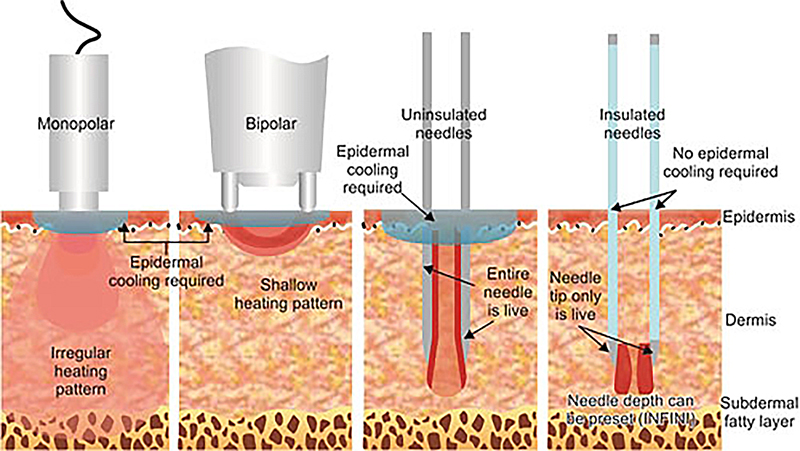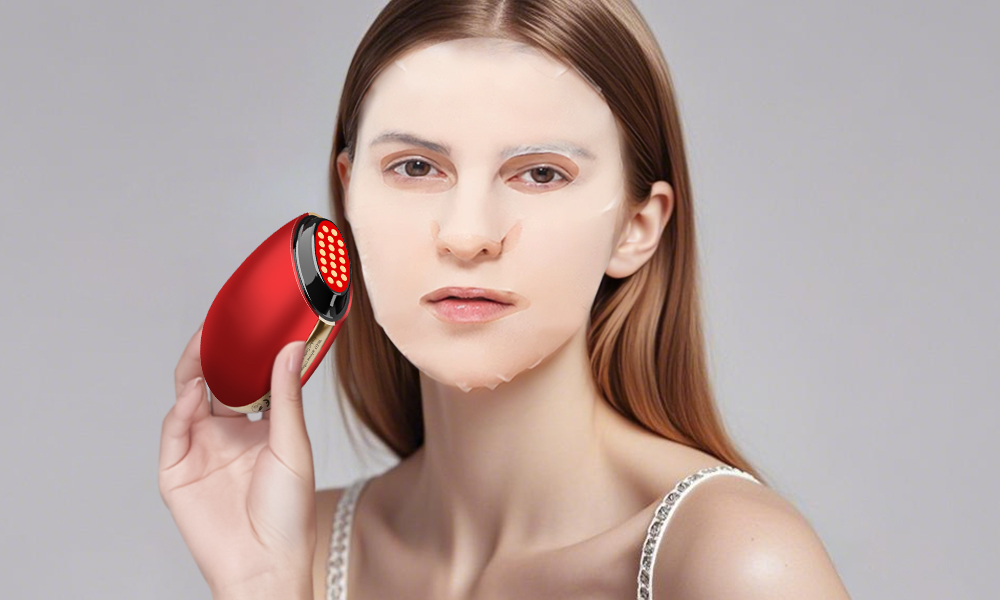
In recent years, radio frequency (RF) technology has become a cornerstone in the world of at-home beauty devices, revolutionizing the way we approach skincare and anti-aging treatments. From its clinical origins to its current widespread use in consumer-friendly gadgets, RF technology has shown remarkable potential in offering non-invasive solutions for rejuvenating the skin, reducing wrinkles, and improving overall skin tone.
Let’s take a look at the evolution of RF technology in the beauty industry and how it has transformed from a professional tool to an essential feature of at-home beauty devices.
Radio frequency technology first emerged in the skincare and beauty industry in the 1990s. Initially, RF was used exclusively by dermatologists and cosmetic surgeons as a non-invasive method for skin tightening, wrinkle reduction, and cellulite treatment. The procedure involved using a device that emitted RF energy to heat the deeper layers of the skin, stimulating collagen production and improving skin elasticity.
During this period, RF technology was largely reserved for in-office treatments due to the complexity and cost of the devices, as well as the expertise required for their operation. While effective, these treatments were often expensive and time-consuming, limiting their accessibility to the general public.
In the early 2000s, advancements in technology and miniaturization began to pave the way for at-home RF devices. As the demand for affordable, effective anti-aging solutions grew, skincare brands and manufacturers began exploring ways to make RF technology accessible for home use.
The first at-home RF beauty devices were introduced, albeit with lower power than their professional counterparts, to ensure safety and ease of use for consumers. These early devices offered the basic principles of RF therapy — delivering gentle radio frequency waves to the skin to stimulate collagen production and enhance skin texture. However, they lacked some of the features found in professional treatments, such as the intensity and precision needed for deeper skin layers.
Despite these limitations, these early at-home RF devices provided users with an opportunity to experience the benefits of radio frequency technology without the need for costly in-office visits.
By the 2010s, RF technology had evolved significantly. Technological innovations allowed for the development of more effective, user-friendly devices with improved safety features, adjustable intensity levels, and enhanced capabilities. The miniaturization of RF technology allowed for the creation of compact devices that could be used easily at home, making them more accessible to a broader audience

RF devices in this era began incorporating a range of additional features, including:
At-home RF devices became widely popular, offering consumers a non-invasive, cost-effective alternative to traditional cosmetic procedures like Botox or laser treatments. This led to a surge in consumer interest and a booming market for RF-powered beauty devices.
In the past few years, RF technology has continued to advance with the integration of smart technology and AI. At-home RF devices now come with customizable settings that allow users to personalize their treatments based on their specific skin needs.
Some key developments in the 2020s include:
These advancements have made RF devices even more effective, affordable, and user-friendly, further driving their popularity in the beauty market. Whether it’s targeting fine lines, deep wrinkles, or sagging skin, modern RF devices offer solutions that are customizable, safe, and efficient.
Looking ahead, the future of RF technology in at-home beauty devices is promising. We can expect even greater advancements in precision, safety, and multifunctionality, offering consumers highly personalized and professional-quality treatments at the comfort of their own homes.
Key trends to watch for include:
As RF technology continues to evolve, we can expect more affordable and efficient solutions for achieving smoother, firmer, and more youthful skin from the comfort of home.
The journey of radio frequency technology from clinical settings to at-home beauty devices is a testament to how far the beauty industry has come in terms of accessibility, innovation, and results. What was once a luxury treatment reserved for the professional environment is now available to a wide range of consumers, empowering them to take charge of their skincare routines with advanced, non-invasive solutions.
By continually improving RF technology, manufacturers are opening new doors to anti-aging and skincare treatments that were once unattainable for most people. As the industry continues to innovate, the future of at-home RF beauty devices looks brighter than ever, offering endless possibilities for achieving beautiful, radiant skin.